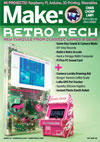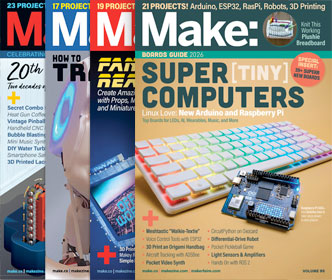
By George Hart for the Museum of Mathematics

I believe that in the future, 3D printing machines will commonly be used to make household parts, e.g., when you need to fix a broken appliance knob or handle. I put this into practice recently when I needed a replacement light dimmer knob and decided to make my own. So, I created this knob based on a lovely polyhedron, the rhombic enneacontahedron. It works well and looks like a little geodesic igloo on the wall.
This is a great opportunity to incorporate some mathiness around the house, so I made a second design, based on the (7,6,6) uniform tiling in the hyperbolic plane. Notice there are both 6-sided and 7-sided craters. At each corner, one 7-sided and two 6-sided craters meet.
If you have access to a 3D printer, you can make your own copies of these mathematical dimmer switches using the stl files available here. They fit right on the shafts of standard US dimmer switches.
More:
See all of George Hart’s Math Monday columns
2 thoughts on “Math Monday: Light Dimmer Knobs”
Comments are closed.
ADVERTISEMENT
Join Make: Community Today













I’ve always been curious about how these complex shapes are modeled in CAD. Are there scripts or “plug-ins” out there that allow you to make these shapes?